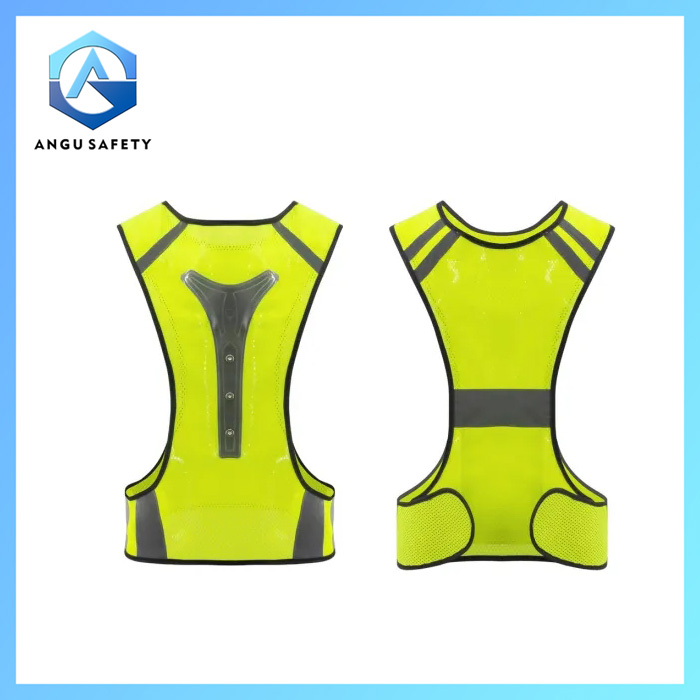The Importance of Safety Vests: Protecting Workers in Every Industry
2025-01-21
In many workplaces, personal safety is paramount, and the safety vest plays a crucial role in ensuring the well-being of workers in a wide variety of environments. From construction sites and roadways to warehouses and emergency response teams, safety vests are a fundamental piece of protective clothing designed to keep individuals visible and safe from accidents. But what exactly makes safety vests so essential, and why should they be worn in specific settings?
In this blog, we’ll explore the importance of safety vests, the different types available, and how they contribute to a safer work environment.
What is a Safety Vest?
A safety vest, also known as a high-visibility vest, is a piece of personal protective equipment (PPE) designed to increase the visibility of workers in environments where there’s a risk of being overlooked, especially by heavy machinery or moving vehicles. These vests are typically made from lightweight, durable fabrics and feature reflective strips or fluorescent colors (such as bright yellow, orange, or green) to help workers stand out in low-light conditions or high-traffic areas.
Safety vests are an essential part of PPE for workers who are exposed to potential hazards in their environment, ensuring that they are easily seen by others, especially in situations where there are limited visibility conditions or fast-moving traffic.
Why Are Safety Vests Important?
1. Increased Visibility
The primary function of a safety vest is to enhance the visibility of the wearer. In environments like construction sites, roadsides, and warehouses, workers can be exposed to moving vehicles or machinery, which could lead to accidents if they are not visible. The bright fluorescent colors and reflective strips make workers stand out against their surroundings, even in poor lighting conditions such as dusk, dawn, or at night.
2. Accident Prevention
By making workers visible from a distance, safety vests significantly reduce the chances of accidents. In busy or high-risk areas, it’s easy for workers to become lost in the background, especially if the weather is foggy, rainy, or if there’s low light. A safety vest helps other individuals, especially drivers or machine operators, identify the presence of a worker early enough to take precautions, slowing down or stopping in time to avoid an accident.
3. Compliance with Regulations
In many industries, wearing a safety vest is not just a precaution—it's required by law. Regulatory bodies, such as the Occupational Safety and Health Administration (OSHA) in the U.S., mandate the use of high-visibility vests in specific environments. Whether working on construction sites, around traffic, or in warehouses with moving equipment, safety vests are a crucial component of workplace safety regulations.
4. Protection in Dangerous Environments
Safety vests are worn in some of the most hazardous work environments, where workers are exposed to moving vehicles, heavy equipment, or dangerous machinery. By wearing a high-visibility vest, workers help reduce the likelihood of serious injuries or fatalities caused by accidents, such as being hit by a vehicle or machinery. Their bright colors and reflective features make it easier for others to spot them and avoid accidents.
5. Worker Confidence
When workers feel safe, they are more confident in their tasks, which can enhance their productivity and focus. Knowing they are visible and protected with appropriate gear allows workers to concentrate on their responsibilities without worrying about potential risks from unnoticed hazards.
Types of Safety Vests
There are various types of safety vests, each designed for specific environments and needs. Here are some of the most common:
1. Class 1 Safety Vests
- Description: These vests are designed for workers in low-risk environments where there is little to no traffic. They offer basic visibility and are typically worn in indoor environments, such as warehouses, factories, or parking lots.
- Example Use: Warehouse workers, retail staff in parking lots.
2. Class 2 Safety Vests
- Description: These vests provide more visibility and are required for workers in moderate-risk areas, where traffic or machinery may be present but not at high speeds. They typically feature reflective strips and brighter colors like orange or yellow.
- Example Use: Construction workers, road maintenance teams, utility workers.
3. Class 3 Safety Vests
- Description: These vests offer the highest level of visibility and are designed for workers in high-risk environments, such as those working on busy highways or construction sites with heavy machinery. Class 3 vests cover the torso and arms for maximum visibility.
- Example Use: Emergency responders, highway construction workers, airport ground crew.
4. Surveyor Vests
- Description: These vests are designed specifically for surveyors or engineers who need to be visible in outdoor environments. They are often equipped with extra pockets to hold tools or equipment needed for the job.
- Example Use: Surveying, road construction, engineering.
5. Cooling and Heated Vests
- Description: For environments where temperature regulation is important, cooling and heated safety vests offer temperature control in addition to high visibility. Cooling vests help workers stay cool in hot environments, while heated vests are beneficial in cold climates.
- Example Use: Workers in extreme temperature environments, such as construction workers in hot or cold weather.
Key Features to Look for in a Safety Vest
When selecting a safety vest, there are several factors to consider to ensure that it meets the necessary safety standards and provides comfort for the wearer. Here are the key features to look for:
1. Reflective Strips: The inclusion of reflective strips is essential for ensuring that workers are visible at night or in low-light conditions. The more reflective material on the vest, the better the visibility.
2. Breathability and Comfort: Safety vests should be made from breathable, lightweight materials to keep the wearer comfortable during long shifts, especially in hot or humid environments.
3. Size and Fit: Safety vests come in various sizes to ensure that they fit comfortably and don’t restrict movement. They should be large enough to be seen but not so loose that they are cumbersome.
4. Durability: Since safety vests are worn in harsh environments, they should be made from durable, long-lasting materials that can withstand wear and tear, such as nylon or polyester.
5. Visibility and Color: Bright, fluorescent colors such as yellow, orange, or green are typically used for optimal visibility. Reflective tape or strips should cover as much of the vest as possible to enhance visibility in low-light situations.
Conclusion
Safety vests are essential for protecting workers in hazardous environments, ensuring that they remain visible and reducing the risk of accidents. Whether working on a construction site, managing road traffic, or performing tasks in a warehouse, the use of a safety vest can make all the difference in keeping workers safe.
With various types of safety vests available, it's important to choose the one that best fits the needs of the environment and task at hand. Prioritizing safety in the workplace helps prevent accidents, comply with regulations, and create a more confident and productive work environment for everyone involved.
When it comes to workplace safety, a safety vest is a simple yet indispensable tool that makes a huge impact in safeguarding workers and ensuring their well-being every day.



